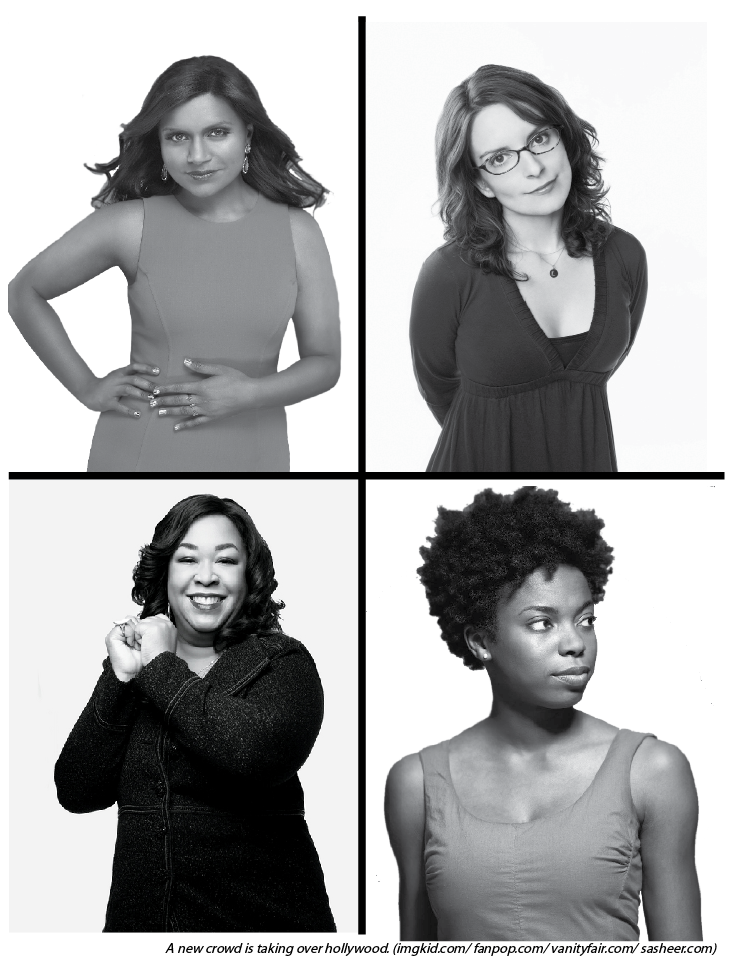We are in the midst of a culture war where the personal and the political are becoming increasingly intertwined. A new discourse of social consciousness is emerging as the generation that was born in a world with ostensible equity across racial, sexual, and gender lines comes of age and realizes that things aren’t as equally represented as the people at the top claim they are be. This has manifested itself in a million different ways across the McGill campus, from womens-only gym hours to ‘Farnan-gate.’ Beyond McGill, issues of proper representation abound; we can see that these issues are endemic of the culture at large.
This problem extends to popular media in that representation of women and minorities in media is nowhere near what it should be. To wit: Recent data shows that 90 per cent of major motion picture leads in a given year are white, and 75 per cent are male. Close to 90 per cent of television writers are white. Seven of the nine major television network heads and seven of the eight major film studio heads are white males. This is, of course, grossly out of line with how demographics are distributed in terms of population, so why has this been happening? Civil rights have made decidedly huge leaps in the last several decades, but it seems like television and film have been changing at a much slower rate than the rest of the world. The problem begins at the top.
“[Lack of diversity] is typical of North American power in general,” says Dr. Morton Weinfeld, professor in the McGill Sociology Department. “This would be true of Fortune 500 companies. This would be true of leaders of the major Ivy league universities, et cetera.”
A lot of this comes from the fact that demographic difference is split along socioeconomic lines. White males are more likely to earn more and be placed in positions of power than any other demographic. This creates a sort of echo chamber in which the perspectives of the majority are constantly reaffirmed while non-majority perspectives are not given an equitable footing to showcase their stories.
The race and class hegemony also has secondary effects in terms of the type of media that gets produced and how people react to it.
“An image is not just an image,” remarked professor Margaret Campbell, at the Concordia Department of Sociology. “It’s really close to people—the way they perceive themselves, their sense of identity, their personhood, the way they perceive others.” Thus, when a young black male watches television and sees that a huge proportion of black actors are being typecast as criminals, part of that gets internalized and the boy’s world gets a little smaller.
The same principle applies to how the society is influenced by content, which is what leads to such intense and vitriolic backlash against any changes in the status quo. While the actual number of people protesting increased diversity is small, it accounts for some of the most fervent and regular dissent—be it against women’s gym hours or what Lena Dunham’s antics on Girls. This problem stems from two things. One is that the majority has been used to having a monopoly on what airs for so long that any alterations to it are perceived as a threat. The other is that people of the overrepresented majority misread the messages of content as labelling them as tacitly or overtly racist or misogynist. It puts people on the defensive—since nobody wants to be called prejudiced—and sparks backlash and aggression towards the media that they think is criticizing them.
There’s also an uneasy clashing of genuine improvement and institutionalized discrimination at the executive level of entertainment. While some studios seem to be legitimately trying to produce content that more accurately reflects the demographic makeup of North America, it can be unclear whether the increase is due to valid positive change or a desire to appease the public. For instance, take the case of Sasheer Zamata, who was hired as a Saturday Night Live (SNL) cast member amid a public controversy that the show was not diverse enough. Now she is rarely used at all. SNL has, it seems, filled its quota. This sort of lip service clearly doesn’t benefit anybody—it only makes it more difficult for consumers to discern who is truly committed to diversity.
However, it’s important to note that things may be getting better.
“[I remember] exactly when the number of leading visible minority characters on television was zero—an easy number to remember,” recalls Dr. Weinfeld. “The number of such characters as leading roles in film was zero. The number of [minority] newscasters was zero.”
It’s easy to forget this fact when there’s so much that needs correcting, but things are changing quickly and noticeably. In television, we seem to be exiting an era where prestige dramas are defined by white men doing terrible things, and entering one where there’s a lot more balance in representation. Content creators like Tina Fey, Shonda Rhimes, Mindy Kaling, and Justin Simien (to name just a few) are engaging with their ideologies and struggles while dispelling the myth that feminist and racial perspectives come in one monolithic form. For example, shows like Black-ish and Fresh off the Boat succeed not because of their representation of minority culture, but in their portrayal of a very specific and singular family dynamic.
Real change is coming from the bottom-up, as well. Empirical data reveals that shows with an accurate amount of minority representation are watched more than shows that have less than the average, and television is slowly changing to meet those demands. Campbell extolls the virtues of social media as a place where everybody is on an even playing field. Mediums like Twitter offer an opportunity for broad social movements to organize with relative ease and influence the people at the top. While there’s the irony that most of the worst, least progressive speech also comes from these platforms, social media is ultimately doing more good than harm. Hate increasingly falls on deaf ears, getting lost in the white noise of the sheer volume of social commentary. What gets left over and recycled and reblogged and retweeted is a critical analysis of the present and a hope that we may live in a world that is as equal as we dream it to be.









